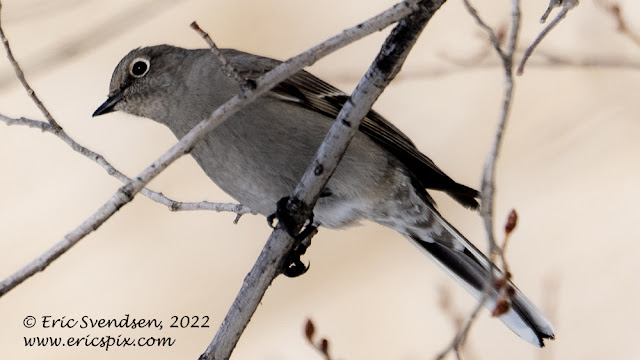Townsend's solitaire
In January of this year we traveled to Leduc, Alberta to visit my granddaughter and celebrate her very first birthday. When the weather permitted it, I slung my camera over my shoulder and head out to nearby parks looking for whatever wildlife would present itself. It was at the end of a trail I had discovered, near a senior's complex, that a Townsend's solitaire showed up.
Leduc is in central Alberta and well away from any of the winter range maps I found for this species. Although migration paths show its transition through the area, the fact that it was a resident piqued my curiosity. Alberta had suffered from a significant cold snap and yet the bird was doing well. How did it survive?
Solitaires are a variety of thrush and eat copious amounts of invertebrates and berries. Insects, worms, and other soft-bodied creatures being in short supply at this time of year meant that they would be feeding on mostly berries. Fortunately, there was plenty of mountain ash, snowberry, and juniper plants about. Solitaires are exactly that, solitary in nature, and defend territories vigorously. They rely on their knowledge of food stores to get by.
We have had a massively negative impact on birds overall. However, we have also been helpful in the planting of such plants like juniper and mountain ash to help overwintering birds manage. If you are thinking about planting some trees, consider ones that will act as food stores for birds.
This was the most interesting bird to cross my path on this particular day. I did find an assortment of chickadees and crows and a single red squirrel as well. The solitaire made my day.
Thanks for reading. www.ericspix.com




Comments
Post a Comment